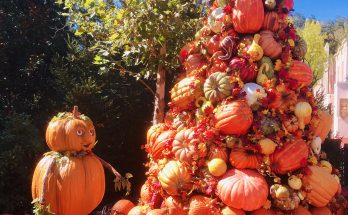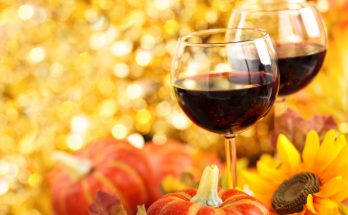You’ve heard of eating what’s in season, but how about drinking by the season? Here’s a brief guide of wines from France to drink this summer.
Rosés
When the weather heats up, friends of mine who live in Manhattan break out the rosé wine and drink it all summer long. I call this seasonal drinking.
When it comes to French rosés, I would recommend Côtes de Provence rosés, easily available in the US. Other regions like Burgundy and the Rhône Valley also produce notable rosés.
Good French rosés tend to be in the $20 per bottle range. They all come in enchanting gem shades of pink, with varying degrees of refreshing floral, citrus, and fruity notes. Rosé wines gain their slight color and low tannins from having only several hours of contact with the grape skins during the winemaking process. This makes them “light” and easy to drink as an apéritif or with lighter summer fare like gazpacho soup, fish, grilled vegetables, or a salade Niçoise (see my recipe for this salad and for dozens of food and wine pairings in The Bordeaux Kitchen cookbook.)
Dry Whites
Every French wine region boasts a white wine grape or blend, so the white wine possibilities are endless.
Having lived in Bordeaux, I got to know the Bordeaux whites, such as the appellation of Entre-Deux-Mers (“between two seas,” in reference to the two rivers, Dordogne and Garonne, that split Bordeaux into its various wine regions).
The Bordelais eat seafood paired with the crisp, chilled, and largely inexpensive Entre-Deux-Mers wines made from Sauvignon Blanc, Muscadelle, Sémillon, and Ugni Blanc grapes.
Burgundy chardonnays are legendary in flavor, price, and fame, but wine distributors in the US offer these in a range of prices. Try a white fish, clams, or salmon dish with a Chablis (pronounced “sha-BLEE”), with its crisp apple flavors and notes of mineral and flint, or a Pouilly-Fuissé that tends to have nutty and apple notes.
The Loire Valley produces its share of beautiful white wines, including the flinty Sancerre, called the Tom Hanks of wine by WSJ wine writer Lettie Teague.
Sweet Whites
In contrast to “dry” wine (low residual sugar in the winemaking process), “sweet” wines are exactly that – sweet!
Also called dessert wines, these come in various shades of yellow and gold to amber (aged). The key to a sweet wine is the balance between residual sugars, acidity (freshness) and alcohol (bitterness).
Called the “nectar of the gods,” an expensive “Bordeaux sweet,” like a Barsac or a Sauternes, will be aromatic and deceptively unsweet, yet alluring enough to be a dessert in itself. Affordable, lovely sweet wines are produced most notably in the South of France, including Muscat (Languedoc) and Banyuls (Roussillon) and in the French Southwest, most notably Bergerac (Monbazillac and Saussignac), Bordeaux, and Jurançon.
Sparkling Wines
I never met a sparkling French wine I didn’t like. It seems like every occasion worth a party in Bordeaux calls for a starter of sparkling wine.
Champagne comes from the Champagne region of France alone – every other bubbly French wine is called “sparkling” (crémant), unless you’re in Russia where everything is called “shampanskoye!”
Well known French sparkling wines are named after their region or appellation of origin: Crémant d’Alsace, Crémant de Bordeaux, Crémant de Bourgogne, Crémant du Jura, Crémant de Loire. Sparkling wines range from brut (no or very low residual sugar), to “sec” (low residual sugar) to “demi-sec” and “doux,” which are much sweeter and have higher amounts of residual sugar. Pair a low sugar brut or sec with summer fish and vegetable dishes. You can find sparkling wines at pretty much any price point.
“Light” vs. “Heavy” Reds
Depending on your summer menu, there are always the reds to fall back on, if you are a fan. Lighter reds that are lower in tannins hail from the Loire Valley (Touraine), Beaujolais, Savoie-Bugey, and Alsace.
Or else go with the full-on reds from Bordeaux, the Rhône Valley and Burgundy. One of my favorite red appellations that produces balanced and “not heavy” wines is the Graves region of Bordeaux. These wines have a balanced approach to blending Cabernet Sauvignon and Merlot, along with other grapes, depending on the vineyard.
The gravel in the soil gives Graves its name, with the stones heating up in the daytime sun and keeping the soils warm overnight while helping to keep the vines warm and ripen the grapes. Aromatic and flavorful, a Graves red will delight you as you bite into a midsummer roast, stew, or steak.
Don’t be afraid to experiment with different wines with your meals this summer. Make a summer wine budget, and have fun with it! And as the French say, “Chin-Chin!”



